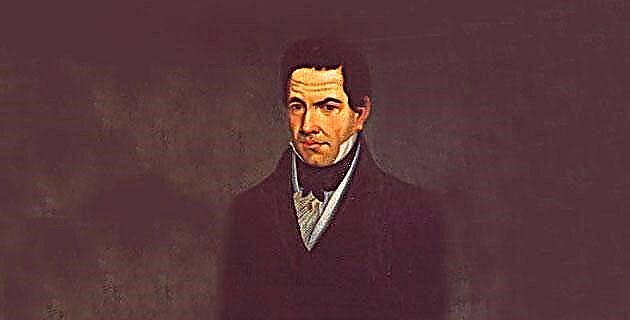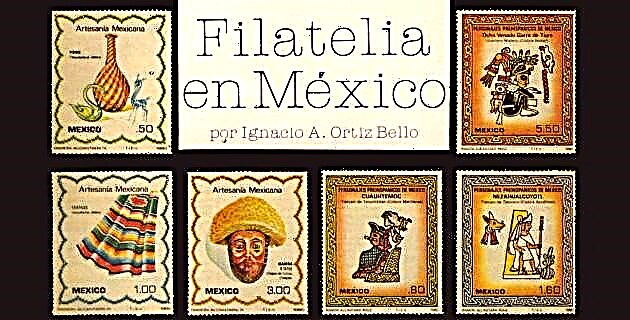
In addition to the simple act of acquiring stamps, the philatelist classifies and studies them, analyzes the paper on which they were printed, the gumming, their respective perforations and the type of their printing, just to mention some of the many details that practice requires. of philately, the art of collecting stamps.
Mexican philately is of special interest to collectors due to its particular characteristics such as the stamps, marks and countermarks that were used in different times and in different places in Mexico. We have, for example, that many stamps, with the same name and manufactured in the same color, were different in the different regions of the country.
Around 1840, the Englishman Sir Rowland Hill devised a system for the postage of correspondence by means of stamps. This solved the great losses that meant that the recipient and not the sender paid the postage of the correspondence.
Classical era of Mexican philately
By decree of President Ignacio Comonfort, in 1856 the first Mexican stamps were issued, in which the portrait of the liberator Miguel Hidalgo appeared. It was a series of stamps with five different values made on plain white paper, without a watermark or watermark.
Before, during the era known by experts as Mexican pre-philately, both the origin and the rate of a postal item were indicated on the envelope with marks of wooden or metal stamps and manual marks.
The second postal issue took place in 1861. It consisted of stamps of five values in combined colors. The first perforated stamps, also with the effigy of Hidalgo, appeared in the third broadcast.
By official provision, due to the insecurity that prevailed in the country, it was at the respective post office where the stamps of each consignment had to be marked with the name of the administrator.
Starting in 1864, the stamps would be countermarked with the progressive invoice number before sending them to the corresponding main administrations, which in turn would carry a control number with which they would be sent to the subordinate offices.
In May 1864, shortly before the arrival of Maximilian, the Regency decreed a new broadcast on the occasion of the next establishment of the Empire. These seals are known by the name of Imperial Eagles. Two years later, the Maximilians of 7, 13, 25 and 50 centavos appeared, which circulated regularly until the triumphant entrance of Benito Juárez to Mexico City.
With the Republic restored in 1867, Juárez decreed the reprint of the stamps from the 1861 broadcast, adding the word Mexico. It is worth mentioning that during all those times of political instability, extraordinary broadcasts appeared in the different states of the country. In 1883 the marks and counter marks fell into disuse.
Ancient, revolutionary and modern times
The ancient era of Mexican philately covers from 1884 to 1911. At this stage, series of very beautiful stamps with excellent engraving works stand out. It was then common for stamp printing to be done abroad, with paper of different thickness.
Despite this, and notwithstanding the advancement in printing and punching techniques, broadcasts from the ancient era are of less interest to philatelists. At this stage the so-called Official stamps emerged, as well as the Complementary ones.
The revolutionary years mark the most interesting stage of Mexican philately, in terms of postal rarities. The different sides in the contest emitted their own stamps or overloaded them with hand markings, sometimes even printing them in different colors or with inverted images.
In the modern era of Mexican philately, one can distinguish the permanent or basic series, the commemorative series and the series, now extinct, of exclusive stamps for air mail.
The permanent series have no speculative value, but they represent a rich vein for philatelic research due to the kind of paper, rubber, perforations and watermarks of the different editions.
The “México Exporta” series (1923-1934, 1934-1950, 1950-1975) mark an entire era in modern philately, as do the “México Turístico” series (1975-1993 and 1993 to date). Stamps for the specific payment of airmail appeared in 1922 and were in effect until 1980.
From 1973 until today, Mexican stamps are printed in the Stamp and Securities Printing Workshops dependent on the Ministry of Finance and Public Credit.
In recent years, the Mexican Postal Service has issued 611 different stamps to disseminate important events in Mexican and international society such as health campaigns, Olympic competitions, homage to prominent personalities and institutions, commemoration of historical events, etc. The most recent thematic series are called “Let's Conserve the Species of Mexico”.
During the modern era of Mexican philately, the production of stamps that are sold abroad with collectors who have taken our culture to the most distant countries has been renewed and modernized.
Source: Mexico in Time No. 39 November / December 2000











